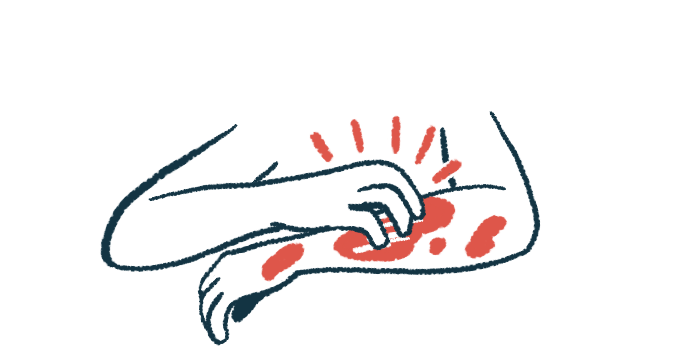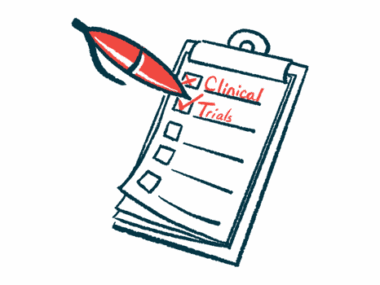2 arthritis medications may help relieve itching for DEB patients
Small Korean study shows promise of baricitinib or upadacitinib treatment
Written by |

Treatment with baricitinib or upadacitinib, two approved medications for rheumatoid arthritis, may be effective for relieving itching in some people with dystrophic epidermolysis bullosa (DEB).
That’s according to a small study from Korea in which these medicines were found to reduce patient-rated itch severity scores — in some, by more than half after four weeks of use. All of the patients in the study had treatment-resistant itching due to the rare skin disease.
While there weren’t sufficient data to prove the efficacy of these arthritis medications, the researchers noted that their use may help to stop the “vicious cycle” seen in DEB, in which scratching itchy blisters often leads to new ones.
Overall, the team concluded that baricitinib and upadacitinib are “potential therapeutic options for the treatment of refractory [hard-to-treat itching] in patients with … subtypes of DEB.”
The study, “Efficacy of oral JAK1 or JAK1/2 inhibitor for treating refractory pruritus in dystrophic epidermolysis bullosa: A retrospective case series,” was published in The Journal of Dermatology.
Testing these approved arthritis medications for use in DEB
Itching, known medically as pruritus, is a common symptom of DEB. Patients with this form of epidermolysis bullosa commonly experience a repeated cycle in which they’ll scratch an itch and cause further skin damage and blistering, which triggers more itching.
Increased inflammation is a biological hallmark of DEB that’s thought to be one of the main drivers of itch. Baricitinib and upadacitinib are both anti-inflammatory medications that work by blocking the activity of proteins called Janus kinases, known as JAKs.
Specifically, baricitinib, which is sold under the name Olumiant, works to block both JAK1 and JAK2, while upadacitinib, sold under the brand name Rinvoq, blocks JAK1 only. Both medications are approved in the U.S. to treat rheumatoid arthritis — a disease characterized by inflammation in the joints — among other indications.
In this study, scientists from the Yonsei University College of Medicine reviewed data from 12 people with DEB who were treated with one of these two arthritis medications.
The patients ranged in age from 12 to 51 and half had recessive DEB while the other half had dominant DEB. Prior to starting treatment, patient-rated itch severity was 7.5 out of 10, on average, reflecting therapy-resistant pruritus.
Seven of the patients were given upadacitinib, at a dose of 15 mg per day, while the other five received baricitinib at a dose of 4 mg/day.
Two patients stopped treatment after two weeks — one because the therapy wasn’t working, and another due to concerns that it could increase the risk of a skin cancer recurring. The other 10 patients remained on therapy for at least four weeks, or about a month.
We demonstrate that off-label use of baricitinib or upadacitinib effectively reduces DEB-associated pruritus [itching].
Patient-rated itch scores decreased by a mean of 3.08 points after two weeks. For those who continued treatment for at least four weeks, their mean scores decreased by nearly four points. That works out to a reduction in itch scores of 42.9% at two weeks and 52.7% at four weeks.
“We demonstrate that off-label use of baricitinib or upadacitinib effectively reduces DEB-associated pruritus,” the researchers wrote. The term off-label use refers to using drugs to treat diseases other than those for which they are specifically approved.
8 of the 12 patients in this study also experienced fewer new blisters
Seven of the 10 patients who continued therapy for at least a month reported a decrease in itch scores of at least three points. That reduction was sustained for the duration of the treatment period — which was more than two months, on average — in most cases. Three of these patients also reported notable reductions in pain intensity after a month on treatment.
Also of importance, eight of the 12 total patients experienced a reduction in new blisters after starting treatment, and many had less skin redness, which is a sign of inflammation.
“Given the significant correlation between the reduced blister formation and reduced itch intensity, JAK inhibitors could effectively break the vicious cycle of itch-scratch-blister formation in DEB patients,” the scientists wrote.
Subgroup analyses indicated that the efficacy of these therapies for easing itch was similar in patients with recessive or dominant DEB. The researchers noted that itch scores tended to decrease more in patients given baricitinib than in those given upadacitinib, but the difference was not statistically significant — meaning it’s mathematically plausible this difference might be due to random chance.
None of the patients experienced any severe side effects related to either therapy, though one person on baricitinib stopped taking the medication due to side effects including fatigue and frequent ear infections, known as otitis media. The researchers stressed, however, that this was a short study, so more research is needed to verify whether these therapies can be safely used long-term in DEB patients.
The team also noted that this was a small and retrospective analysis, so it’s impossible to draw definitive conclusions about efficacy from these data alone. As such, the scientists called for further large-scale studies to evaluate the safety and potential efficacy of these arthritis medications to help manage symptoms of DEB.






